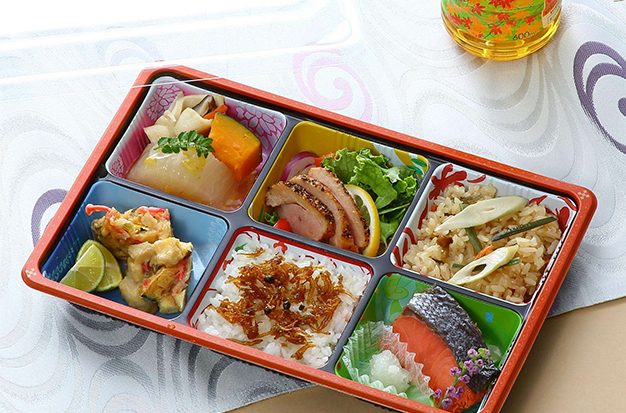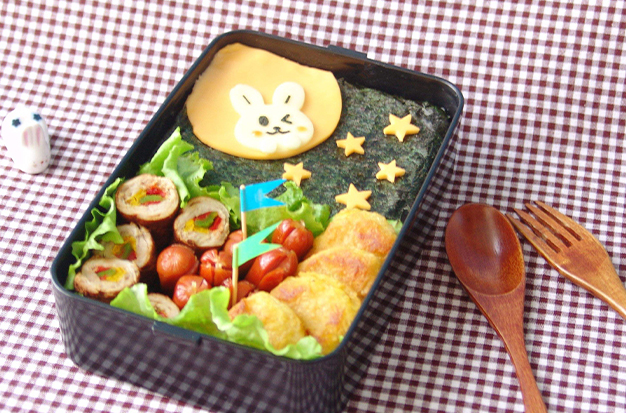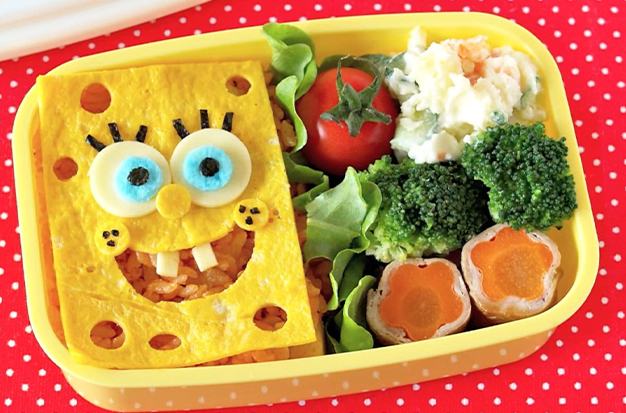
This is not your typical packed lunch, despite the fact that the Japanese word “bento” roughly translates to “box lunch” in English. The idea behind bento is to put together a balanced meal that is pleasing to the eyes and the palate. The food should first be divided into equal portions, and then each portion should be placed in a different compartment of your bento box. To create an authentic experience, aim for a variety of hues, tastes, and textures.
Five Rules Of Making Bento For Beginners
Rule 1: Cooling Down
Rice and all side dishes need to be cold when they are packed. This is due to the fact that combining warm and cold dishes will cause them to spoil more quickly. It is best to pack items when they have already cooled down because the bento will be consumed cold. Prior to packaging, let the rice cool and let any extra moisture evaporate. Allow all side dishes to cool.
Rule 2: Season Well
The general consensus is that when food gets cold, it loses some of its flavor. Bento gets cold because we don’t consume it right away after making it. We must season it properly as a result. Adding a little more condiments such as soy sauce and miso or marinating first is a great idea. This guarantees that the food will be tasty and satisfying.
Rule 3: Use Food That Has An Antiseptic & Bactericidal Effect
One reason you often see Umeboshi salted plum on plain rice is not just to make it look like the Japanese flag but because Umeboshi salted plum has an antiseptic and bactericidal effect. This keeps the food fresh and ensures that it won’t spoil before you eat it. Adding ginger is another good idea because ginger has an antibacterial property.
Rule 4: Evaporate And Remove Any Liquid
Nobody desires a soggy bento box. So it’s imperative to drain any extra liquid. Make sure all the liquid has evaporated before cooking any side dishes and that all the vegetables are crisp and dry. Additionally, make sure the rice has cooled completely to remove any remaining steam moisture.
Rule 5: Packing Order
In general, pack the rice or onigiri first, then bigger side dishes next, and finally fill the gaps with smaller side dishes and veggies. Japanese people don’t just slap anything in front of them at random. They consider how things look, how colors go together, and—most importantly—whether certain foods don’t pair well in terms of flavor or taste. You can experiment with a variety of bento lunch box ideas to discover delicious filling choices.

How To Make A Bento?
Start With The Right Container
You can choose a fancy or basic bento box to pack your lunch in. You have access to a huge selection of bento box brands, designs, and price points. As you make your selection, keep in mind the following crucial bento box characteristics.
- The container has a reliable, secure lid that can be closed.
- Dividers are present in the container. As few as one divider to divide a space into two sections or as many as three to four dividers. Note: Bento can also be packed in a plain container without compartments.
- While the majority of bento containers are flat, some varieties are cylindrical and have separate stackable compartments for both soup and solid foods. This kind of bento container might be the best choice if you enjoy soup or stew.
Accessorize
Since there is a sizable market for bento boxes and accessories, customers can select from a wide range of products offered online or in conventional Asian or Japanese supermarkets.
Accessories include:
- Forks
- Spoons
- Chopsticks
- Mini skewers or picks–for picking up small bites of food
- Food cups (or baking cups) in decorative silicone, paper or aluminum come in different shapes and sizes–for holding different types of food
- Food dividers (small, thin dividers made of silicone)–used to separate food with sauce from fruit for example
Plan Ahead
You’ll learn how simple it is to make a nutritious lunch that you, your children, and/or your family can enjoy five days a week with just a little bit of planning! If you already use a weekly meal plan to plan your dinners, it’s highly likely that you have a good selection of nutritious foods at your disposal. Making an extra serving of your evening meal so that you have leftovers to pack in your bento the following day may be all that’s necessary in terms of bento planning. Easy!
Bento Can Be Used For Many Cuisines
You don’t have to eat only Japanese food to fill your bento lunch. The bento may also contain foods like pasta, salads, sandwiches, and wraps. You could also add additional snack foods like cheese and crackers. As previously mentioned, using specific bento containers, soup and stew can also be packed in a bento lunch.
Balance And Aesthetics
Nutrition is among the most crucial factors to consider when packing a bento lunch. Include a lot of fruits and vegetables, whole grains, lean protein in moderation, and a small amount of dairy. For a balanced meal, the USDA (U.S. Department of Agriculture) suggests the following ratios:
- 40% vegetables
- 30% whole grains
- 20% protein
- 10% fruit

Other Tips And Time-Saving Tricks
- Add accent points with small produce items or fruits to make the bento more aesthetically pleasing. Put cherry tomatoes, cucumber slices, broccoli, carrots, and fresh berries like blueberries and strawberries in the bento after you’ve filled the main dishes with food.
- You can use small cookie cutters or a knife to cut fruits and vegetables into adorable shapes when making bento box lunches for kids. Apple slices are frequently cut into bunny shapes in Japan by slicing the skin in half to create ears.
- It’s best to pack small snacks for children’s bento boxes in separate containers or in a different lunch box. It’s possible that foods like chips, pretzels, cookies, almonds, and other nuts won’t go well with the main courses. Additionally, liquid items like Greek yogurt and compotes must be kept in a container that won’t leak.
- Make it easier to eat by providing small skewers for bite-sized foods like grapes, tomatoes, and miniature sausages.
- A bento box is primarily made of rice in Japan. We do not include items like bread rolls, sandwiches, pita bread, tortilla chips, or tortilla wraps. If you do this, make sure to still adhere to rule 5 to create flavors that are harmonious and complementary.
- Prepare a few of your meals in advance to save time without sacrificing the caliber or deliciousness of your bento. So that you only have to pack in the morning, make as much preparation as you can the night before. Make the meatballs, for instance, the night before, then cover them in a thick sweet and sour sauce the next day. The night before, prepare the egg, then slice and pack it the next day. Prepare potato or pasta salad the night before, then pack the following morning.
Conclusion
You can pack your lunch like the Japanese do at any time, even if you need to pack multiple dishes, if you adhere to these five fundamental rules, time-saving techniques, and tips that the Japanese know and employ.
Please rate and comment if you like it below. Enjoy packing bento like a pro.
